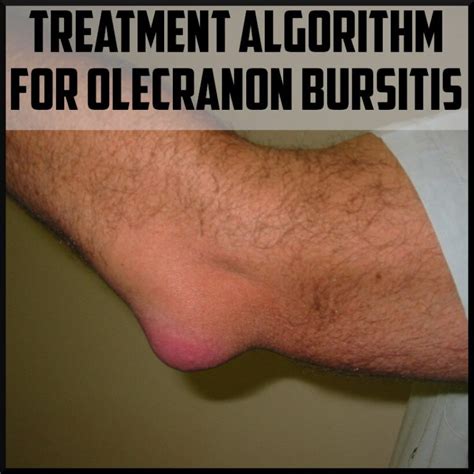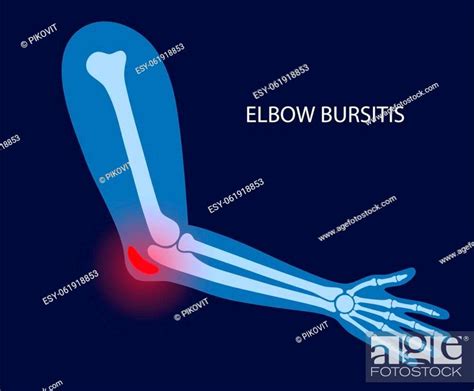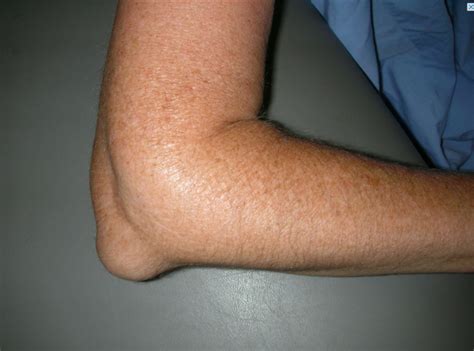Intro
The bursa on the elbow, also known as olecranon bursitis, is a condition that affects the fluid-filled sacs, or bursae, that cushion the joints and reduce friction between bone and soft tissue. The olecranon bursa is located at the back of the elbow, and when it becomes inflamed, it can cause pain, swelling, and limited mobility. This condition is often caused by repetitive motion, direct blows to the elbow, or infection. Understanding the importance of the bursa on the elbow and how to manage olecranon bursitis is crucial for maintaining elbow health and preventing long-term damage.
The bursa on the elbow plays a vital role in reducing friction between the olecranon, the bony tip of the elbow, and the overlying skin. It allows for smooth movement of the elbow joint, making it possible to bend and straighten the arm without discomfort. However, when the bursa becomes inflamed, it can lead to a range of symptoms, including redness, warmth, and swelling at the back of the elbow. In severe cases, the bursa can become infected, leading to more serious complications. Recognizing the signs and symptoms of olecranon bursitis and seeking medical attention if necessary is essential for preventing long-term damage and promoting effective treatment.
The complexity of the bursa on the elbow and its role in maintaining elbow health highlights the need for a comprehensive understanding of this condition. By exploring the causes, symptoms, and treatment options for olecranon bursitis, individuals can take proactive steps to protect their elbow health and prevent future complications. Whether you're an athlete, a manual laborer, or simply someone who wants to maintain optimal elbow function, understanding the bursa on the elbow is essential for promoting overall health and well-being.
Understanding Olecranon Bursitis

Olecranon bursitis is a condition characterized by inflammation of the olecranon bursa, which can be caused by a range of factors, including repetitive motion, direct blows to the elbow, or infection. The condition can be acute or chronic, with acute cases often resolving on their own within a few weeks. However, chronic cases can persist for months or even years, leading to ongoing pain and limited mobility. Understanding the causes and risk factors for olecranon bursitis is crucial for preventing and managing the condition.
Causes and Risk Factors
The causes and risk factors for olecranon bursitis include: * Repetitive motion: Activities that involve repetitive elbow movement, such as tennis or rowing, can increase the risk of developing olecranon bursitis. * Direct blows: A direct blow to the elbow, such as a fall or a hit, can cause the bursa to become inflamed. * Infection: Bacterial or fungal infections can cause olecranon bursitis, particularly in individuals with weakened immune systems. * Medical conditions: Certain medical conditions, such as rheumatoid arthritis or gout, can increase the risk of developing olecranon bursitis.Diagnosing Olecranon Bursitis

Diagnosing olecranon bursitis typically involves a physical examination and medical history. A healthcare professional will assess the affected elbow for signs of inflammation, such as redness, warmth, and swelling. They may also perform imaging tests, such as X-rays or ultrasound, to rule out other conditions and confirm the diagnosis. In some cases, a sample of fluid may be taken from the bursa to check for infection.
Symptoms and Signs
The symptoms and signs of olecranon bursitis include: * Pain and tenderness at the back of the elbow * Swelling and redness at the affected area * Limited mobility and stiffness in the elbow joint * Warmth and inflammation at the affected area * Fever and chills, in cases of infectionTreatment Options for Olecranon Bursitis

Treatment options for olecranon bursitis depend on the severity and cause of the condition. Mild cases may be managed with rest, ice, and compression, while more severe cases may require medication, physical therapy, or surgery. In cases of infection, antibiotics or antifungal medication may be prescribed to clear up the infection.
Conservative Management
Conservative management options for olecranon bursitis include: * Rest and avoidance of aggravating activities * Ice and compression to reduce inflammation * Elevation of the affected arm to reduce swelling * Pain relief medication, such as NSAIDs or acetaminophen * Physical therapy to improve range of motion and strengthPreventing Olecranon Bursitis

Preventing olecranon bursitis involves taking steps to reduce the risk of developing the condition. This can include:
- Avoiding repetitive motion and taking regular breaks
- Wearing protective gear, such as elbow pads, when engaging in high-risk activities
- Maintaining good elbow hygiene and avoiding infection
- Strengthening the muscles around the elbow joint through exercise and physical therapy
- Avoiding direct blows to the elbow and taking steps to reduce the risk of falls
Lifestyle Modifications
Lifestyle modifications can also play a crucial role in preventing olecranon bursitis. This can include: * Maintaining a healthy weight to reduce pressure on the elbow joint * Avoiding smoking and reducing alcohol consumption * Getting regular exercise to improve overall health and well-being * Managing underlying medical conditions, such as rheumatoid arthritis or goutComplications and Long-Term Effects

If left untreated, olecranon bursitis can lead to a range of complications and long-term effects. These can include:
- Chronic pain and limited mobility
- Increased risk of infection and abscess formation
- Scarring and adhesions in the affected area
- Reduced range of motion and stiffness in the elbow joint
- Increased risk of developing other conditions, such as tendinitis or arthritis
Seeking Medical Attention
It's essential to seek medical attention if symptoms of olecranon bursitis persist or worsen over time. A healthcare professional can provide an accurate diagnosis and develop a treatment plan to manage the condition and prevent long-term damage.What is the main cause of olecranon bursitis?
+The main cause of olecranon bursitis is repetitive motion or direct blows to the elbow, which can cause inflammation of the olecranon bursa.
How is olecranon bursitis diagnosed?
+Olecranon bursitis is typically diagnosed through a physical examination and medical history, and may involve imaging tests, such as X-rays or ultrasound, to confirm the diagnosis.
What are the treatment options for olecranon bursitis?
+Treatment options for olecranon bursitis depend on the severity and cause of the condition, and may include rest, ice, and compression, medication, physical therapy, or surgery.
In conclusion, understanding the bursa on the elbow and its role in maintaining elbow health is crucial for preventing and managing olecranon bursitis. By recognizing the signs and symptoms of the condition, seeking medical attention if necessary, and taking steps to prevent and manage the condition, individuals can promote optimal elbow health and well-being. We invite you to share your thoughts and experiences with olecranon bursitis, and to ask any questions you may have about the condition. By working together, we can promote greater awareness and understanding of this important topic.
